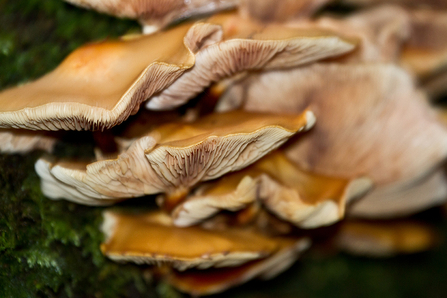I didn’t know what it was called back then, but we were camped at Meathop and had excellent views across to this striking limestone fell. A couple of years ago we ventured up the east side but this time we were exploring the western side along with Howe Ridding Wood. It’s straightforward to find; follow the signs to Witherslack from the A590 (near Meathop/ B5277 rounabout), after a few miles you’ll see a large “Witherslack Hall” sign on a sharp left hand bend (it’s hard to miss), turn immediately right and park considerately along the wide track.
The track heads directly towards Whitbarrow Scar and it’s worth pausing for a moment to look at the wonderful limestone layers; you can really get a feel for how this wonderful landmark was created, though the timescales and the quantities always amaze me. Around 350 million years ago this area was a warm shallow sea (very hard to believe on the freezing November afternoon when we visited) and the limestone was created from the shells of billions of tiny sea creatures falling to the bottom and gradually becoming compacted into rock.
Here’s a simple experiment you can do with your kids next time you’re around limestone to demonstrate how it’s eroded: take a glass of water and a straw, have some fun blowing bubbles in the water with the straw for a few minutes, then drip a little of the water onto the limestone and you should see it fizz slightly. This is what happens when it rains; the raindrops pick up carbon dioxide from the air as they fall and when they hit the limestone they fizz a tiny little bit and gradually erode the rock.
Anyway, enough of the rocks! We started by following the lower track along to Howe Ridding Wood where there was plenty of evidence of woodland management but, it being late November, not much else in the way of flora for us to admire so we headed upwards. There’s a very clearly marked path which climbs up the side of the scar; it’s steep but relatively short and very easy to follow. You soon pass through a gate and into the Hervey Memorial Reserve named in honour of Canon A K Hervey, a founder member of Cumbria Wildlife Trust.


